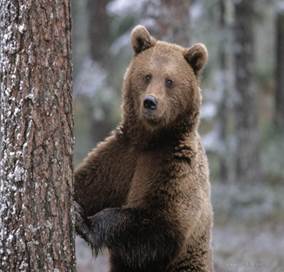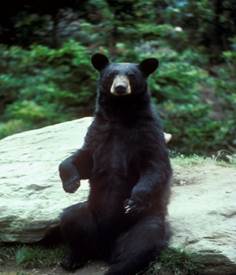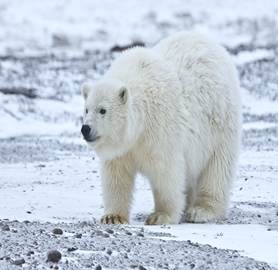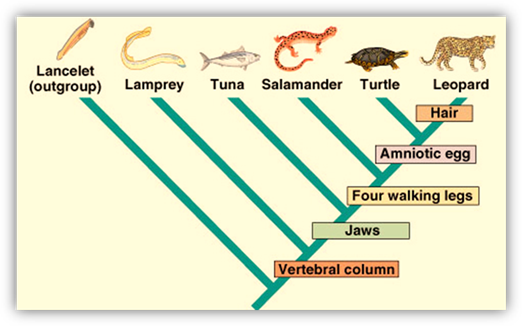TAXONOMY
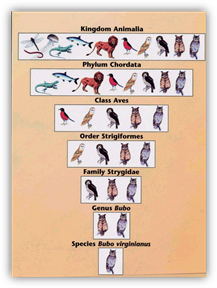
Taxonomy is the
science of naming and classifying organisms. More than 2000 years ago the
Greek philosopher Aristotle began classifying organisms. He classified all
living things as either a plant or an animal. He classified plants according to
differences in stem structure, and animals according to where they lived most
of their life, as in living mainly on land, in water, or in air. For the time,
that was good enough because many living organisms had not yet been discovered.
In the 17th
century, with the invention of the microscope and more knowledgeable
observations, many new organisms were being discovered. These new organisms
were not fitting into Aristotle’s classification system. Part of the problem
was that his system was classifying plants based on structure and animals based
on function or location. The two different ways of classifying was creating
confusion. They were also finding organisms that did not exactly fit into the plant
classification or animal classification, the organisms may have been a little
of both.
Another
problem with the early way of classifying organisms was the use of common
names. Common names sometimes vary from one area or culture to the next. For
example, a puma, cougar, and mountain lion are all the same cat, it just
depends on what part of the country you are in as to which common name they
use. Common names sometimes are named after some other organism of which the
organism is not. For example, a jellyfish is not a “fish”, horseshoe crab is
not a “crab”, and ringworm is not a “worm”. When there was an attempt to create
a scientific name for an organism, the scientific name, called a polynomial,
turned out to be a name consisting of a very long description in Latin.
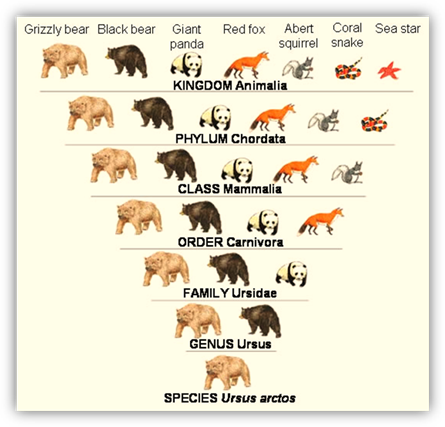 Scientists
need a consistent and easier way of classifying and naming organisms. In the
1750s a Swedish biologist, Carl Linnaeus, developed a consistent classification
system and a two-word Latin naming system as the scientific name for an
organism. He created a system of grouping organisms according to structural
differences and only structural differences. His classification system
classified organisms in sequential levels, starting with the broadest and
largest categories down into more and more specific categories until eventually
you reach the most specific category for naming the organism. The two-word
naming system Linnaeus used to identify every living thing is known as binomial
nomenclature. Linnaeus was not the first to attempt to develop a
two-word naming system for every living thing. Gaspard Bauhin,
a Swiss scientists, was the first at attempting to name organisms with a two
word naming system, however, Linnaeus popularized the two word naming system
along with having a classification system.
Scientists
need a consistent and easier way of classifying and naming organisms. In the
1750s a Swedish biologist, Carl Linnaeus, developed a consistent classification
system and a two-word Latin naming system as the scientific name for an
organism. He created a system of grouping organisms according to structural
differences and only structural differences. His classification system
classified organisms in sequential levels, starting with the broadest and
largest categories down into more and more specific categories until eventually
you reach the most specific category for naming the organism. The two-word
naming system Linnaeus used to identify every living thing is known as binomial
nomenclature. Linnaeus was not the first to attempt to develop a
two-word naming system for every living thing. Gaspard Bauhin,
a Swiss scientists, was the first at attempting to name organisms with a two
word naming system, however, Linnaeus popularized the two word naming system
along with having a classification system.
Linnaean
System of Classification
The
classification system created by Linnaeus was universally accepted and is the
basis of the system we use today. However, as discoveries in nature and
advances in science are made, Linnaeus’s system is always being modified. The
Linnaean system of classification is solely based on an organism’s form and
structure. New organisms are always being discovered, even to this day. This
classification is always used to identify organisms when found. As new methods
of classifying organisms are developed, the classification system is adjusted.
Linnaeus
originally had three broad categories to begin his classification system:
kingdom animal, kingdom vegetable, and kingdom mineral. Since the time of
Linnaeus, many new groups and levels have been added to his classification
system. The current classification system we use today, which is based off the
Linnaean system, has a total of 8 categories or levels, ranging from the
broadest (including the most organisms) to the most specific (including only
one organism). The levels of classification are called taxa (singular, taxon).
The eight levels in order are domain, kingdom, phylum, class, order, family,
genus, species.
Table 35-1 includes all 8 levels of classification
used today. Table 35-1 also has an
analogy with the levels to help you understand the concept of how the taxa
levels work. Domain is the broadest level including the most of whatever it is
that you are classifying. As you make your way down the levels in Table 35-1, notice how the levels
become more and more specific, narrowing down the classification. Recognize
when you reach the genus and species levels it is a very specific street number
and apartment number which identifies a very specific location of which no one
else can have in that city.
|
Table
35-1 includes
all 8 levels of classification used today. Table 35-1 also has an analogy with the levels to help you
understand the concept of how the taxa levels work. Domain is the broadest
level including the most of whatever it is that you are classifying. As you
make your way down the levels in Table
35-1, notice how the levels become more and more specific, narrowing down
the classification. Recognize when you reach the genus and species levels it
is a very specific street number and apartment number which identifies a very
specific location of which no one else can have in that city. |
||||||||||||||||||||
|
||||||||||||||||||||
Modern
Linnaean System of Classification
Remember,
organisms are classified according to structure and are grouped according to similar
traits at each taxon (level). Table 35-2
displays the 8 taxa with the human, bobcat, and lion as examples.
The levels
begin with Domain. Domain is the broadest category focusing on the different
cell types. There are three domains: bacteria, archae,
and eukarya. Domain bacteria and archae
are both prokaryotic domains (cells without a nucleus) with the main difference
between the two being the chemical make-up of their cell walls and different
genetic make-up. Domain eukarya is the only
eukaryotic domain (cells with a nucleus). Notice in Table 35-2, humans, bobcats, and lions all share the same domain,
kingdom, phylum, and class. However, as the levels become more specific, the
human breaks away from the two cats in classification and continues down into a
species. The two cats share the next two levels, then break away from each
other into different genera (singular, genus) and species.
|
TABLE 35-2 |
|||
|
Levels
of Classification |
Human |
Bobcat |
Lion |
|
Domain |
Eukarya |
Eukarya |
Eukarya |
|
Kingdom |
Animalia |
Animalia |
Animalia |
|
Phylum |
Chordata |
Chordata |
Chordata |
|
Class |
Mammalia |
Mammalia |
Mammalia |
|
Order |
Primates |
Carnivora |
Carnivora |
|
Family |
Hominidae |
Felidae |
Felidae |
|
Genus |
Homo |
Lynx |
Panthera |
|
Species |
Sapiens |
Rufus |
Leo |
Domains are made
up of kingdoms. As of the 1990s, there are 6 kingdoms: Eubacteria, Archaebacteria, Protists, Fungi, Plantae, Animalia.
Prior to the 1990s, kingdom eubacteria and archaebacteria
belonged to the same kingdom named Monera. See Table
35-3 for some of the key differences among the 6 kingdoms.
|
Table 35-3 |
||||||
|
Domain |
Bacteria |
Archaea |
Eukarya |
|||
|
Kingdom |
Eubacteria |
Archaebacteria |
Protista |
Fungi |
Plantae |
Animalia |
|
Cell Type |
Prokaryotic |
Eukaryotic |
||||
|
Cell Walls |
With peptidoglycan |
With special lipids |
Some species have cell walls |
With chitin |
With cellulose |
No cell walls |
|
Number of Cells |
unicellular |
Unicellular or multicellular |
Mostly multicellular |
Mostly multicellular |
Multicellular |
|
|
Nutrition |
Autotroph or heterotroph |
Heterotroph |
autotroph |
heterotroph |
||
Kingdoms are made up of phyla (singular, phylum) or divisions. Most sources use
the term phylum to represent this level of classification, however, some
sources still use division to name this classification level for kingdom
plantae.
Phyla are made
up of classes, classes are made up of orders, orders are made up of families,
and families are made up of genera (singular, genus).
From the
genus level, a species name is reached for each living thing found on Earth.
The genus and the species name together make up the scientific name of an
organism. There is only one scientific name for every living thing on Earth.
Scientific
Name
As was
already stated, a scientific name identifies one specific type of organism and is
made up of the genus and species for that organism. A scientific name, along
with the other taxa, use Latin or Latin-like terms so that the names are
understood world-wide. The Latin terms used for classification are descriptive
of the organism, named after someone, or created with humor.
|
Scientific Names |
||
|
|
|
|
|
Ursus
arctos (brown bear) |
Ursus americanus (black bear) |
Ursus
maritimus (polar bear) |
Ursus
arctos (brown bear), Ursus americanus (black bear), and Ursus maritimus (polar bear) are some
scientific names. The scientific name
of an organism is made up of the genus of the organism and a species
identifier, which is usually the species taxon and is descriptive of the
organism. There are some rules to writing a scientific name. The first name
of the scientific name (the genus) must be capitalized, the second name (the
species identifier) is lowercase. The entire name should be italicized or
underlined. Scientific names may be abbreviated, but only if it has been used
once fully. To abbreviate a scientific name, the genus is abbreviated by the
first letter of the genus being capitalized and the species identifier fully
written out as lowercase, such as Ursus arctos into U. arctos.
Notice how
the three bear scientific names all have the same first name of Ursus. That means they all have the same classification
from Domain all the way down to Genus. The next and last level, which is
species, is where they all branch off into the specific type of bear they are.
|
|
Sometimes,
an organism can be classified beyond the species level. There are some species
which have slight variations within their species. Generally if these slight
variations are noticed with plants the term variety is used. If the variation is found among animal species
then the term subspecies is used. A
variety or subspecies name will be written following the species identifier as
in Ursus arctos horribilis (grizzly bear). Notice the similarity in
name between the brown bear and the grizzly bear.
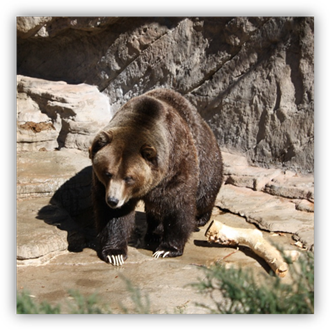
Ursus arctos horribilis (grizzly bear)
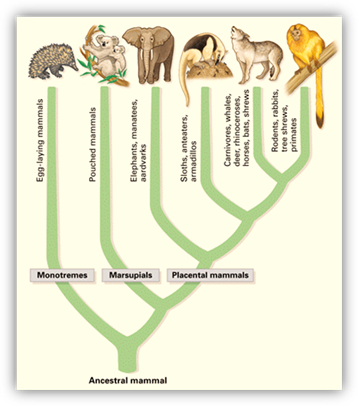 Systematics
Systematics
Systematics organizes the diversity of living
organisms in terms of evolution. Linnaeus based his classification system solely
on organism’s morphology (structure). Since the time of Linnaeus, we have
developed new technologies to study chromosomes, DNA/RNA, proteins, and
embryos. Using all of this new information about organisms, along with their
morphology, we can now improve Linnaeus’s original system of classifying. We
can now even go a step further and relate the idea of evolution of these
organisms. Using all of this data, modern taxonomists can now study the evolutionary history of an organism, or phylogeny. Scientists use a
phylogenetic tree to study and demonstrate the evolutionary history of an
organism. A phylogenetic
tree is a diagram showing the evolutionary
relationship hypothesized to exist among a group of organisms. As new
evidence and information is found, phylogenies change.
It would
seem that all we would need to look at to determine if something is related,
with regard to evolution, is structure or morphology. That is not the case.
When looking at a group of potentially related organisms, two types of structures
arise, homologous and analogous. Homologous structures are structures
between different organisms that are the same because they were inherited from
a common ancestor. Analogous structures are structures
that appear to be the same, however, the structures were not inherited by the
same ancestor. Analogous characteristics usually arise from convergent
evolution, when two organisms adapt to similar environments and become more and
more similar. Only homologous structures can be used as evidence for an evolutionary
relationship, since those structures were inherited from a common ancestor.
Cladistics
Two types of
characters exist in organisms, ancestral and derived. An ancestral character is a character, or characteristic, that has
evolved in a common ancestor of two groups of organisms in question. A derived character
is a character that evolves in one group of
organisms and not in another. An example for ancestral and derived
characters could be bird feathers. Most
animals do not have feathers, therefore, it is safe to assume that birds
evolved with feathers at some point in time while other animals did not.
Feathers would then be a derived character. Cladistics is a method of systematics which determines phylogenies
by comparing both ancestral and derived characteristics.
A cladogram
is a diagram of the evolutionary history of a group of
organisms focusing on derived characters. Some sources use phylogenetic
trees and cladograms interchangeably. Carefully look at Table 35-4 for an example of a cladogram and how to interpret a
cladogram.
|
Table 35-4: Cladogram |
|||||
|
|
|||||
|
Animals |
Vertebral Column |
Jaws |
Four Walking Legs |
Amniotic Egg |
Hair |
|
Lancelet |
No |
No |
No |
No |
No |
|
Lamprey |
Yes |
No |
No |
No |
No |
|
Tuna |
Yes |
Yes |
No |
No |
No |
|
Salamander |
Yes |
Yes |
Yes |
No |
No |
|
Turtle |
Yes |
Yes |
Yes |
Yes |
No |
|
Leopard |
Yes |
Yes |
Yes |
Yes |
Yes |
Dichotomous
Key
A method of
classifying organisms in the field when an unknown organism is found is by
using a dichotomous key. A dichotomous key is an identification key
used to determine the name of an unknown organism, by going through a sequence
of choices requiring the analysis of characteristics. Look at the
dichotomous key example in Table 35-5 as
you read the following explanation.
We will
first classify a dog. With a dichotomous key always start at #1! #1 asks
us if the organism we are classifying is an animal or not. A dog is an animal.
To the right of that choice it says “go to 2”. We then go to #2. #2 asks does
it have wings or not have wings. A dog does not have wings, and to the right of
that choice it says “go to 6”. We go to #6, where it asks, lives in water or
lives on land. A dog lives on land. That choice says “go to 7”. #7 asks does it
have fluffy fur or not. A dog has fluffy fur, and to the right of that choice
it says “go to 8”. #8 asks if it is a common pet or not. A dog is a common pet,
and to the right of that it doesn’t say to go to another numbered step.
Instead, it has a name. The name to the right is the scientific name for the
dog, Canis familiaris.
We’ll try
one more. We will classify a canary. Start at step 1, a canary is an animal, so
go to #2. A canary has wings, so go to #3. A canary has feathers, so go to #4.
A canary flies high, so go to #5. A canary is often yellow, so the name of the canary
is Serinus canaria.
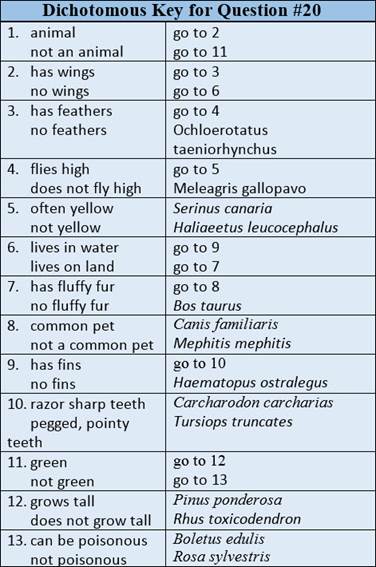
Click on the
Quizlet icon below to access the quizlet.com
vocabulary flash cards. Review the vocabulary before completing your
assessment.
 Now answer questions 1 through 20.
Now answer questions 1 through 20.
